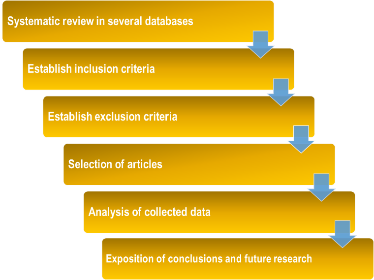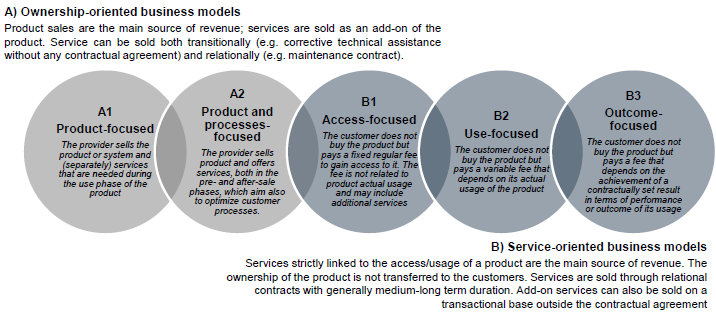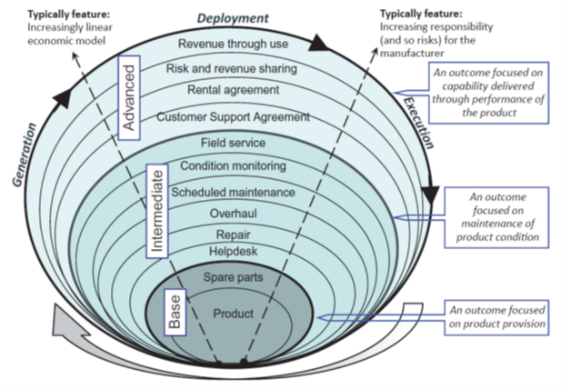Aitor Ruíz de la Torre1![]() and David Sánchez2
and David Sánchez2![]()
1 Department of Industrial Organization and Management Engineering, Faculty of Engineering, University of the Basque Country, C/Nieves Cano 12, 01006 Vitoria-Gasteiz, Spain.
2 Faculty of Business, Mondragon University, C/Ibarra Zelaia Zelaigunea, 20560 Oñati, Spain.
Keywords: Servitization, Business model, Digitalization.
1. Introduction
The benefits of Servitization are innumerable, and interest in this area continues to grow exponentially. Leaving the traditional production model behind, today’s manufacturers see services as the key to success in today’s market [1]. Environmental arguments (related to significant reductions in the use of materials and energy) are also decisive, as well as the immense opportunities that it offers related to improving processes and organizational learning [2] making interest in Servitization in industry continue to grow.
The qualitative review presented in this article focuses on the Servitization concept, key aspects and new business models to help comprehend the concept, as well as correct management and applicability.
2. Research Methodology
With the main objective of presenting a summary review of the evolution of Servitization in order to understand the beginnings and implementation of this concept, and the relevance of its implementation, the summary of the applied methodology is presented in Fig.1:

Literature has been analyzed through articles indexed in Scopus, Web of Science, Engineering Village and main Business databases in Service, being the reference databases in the considered topic, which have helped extract critical analysis of collected data and, subsequently, certain conclusions and future research opportunities.
3. Theoretical background
3.1 Definition
The concept of Servitization has been developed over the last 40 years. There are even some references in the early 80s regarding to this concept developed in the USA by Levitt, the majority of authors have developed the definition posited by Vandermerwe and Rada [3], helping Servitization to evolve and acquire varied nuances that reflect its importance in different scopes. The term ‘product’ is generally internalized in the manufacturing industry, however, when defining ‘services’, many tacitly define this based on what is not a product [4].
The last breakthrough of Servitization is linked to Industry 4.0. Today, no one doubts the importance of advanced services, digitization and IoT in the manufacturing industry as a solid defense against other lower-cost economies [5], especially in sectors where there is a high base of installed products [4].
3.2 Typologies of Servitization
The work of Adrodegari et al. [6] proposes a new classification of formulae to offer services that can help manufacturing companies better understand the shift towards service-oriented business models. Actually, the main, but not only, key point that differentiates certain models from others is the form of monetization that, undoubtedly, will be one of the innovative key points in coming years.

In the figure below (Fig.3), Baines and Lightfoot [7] also explain this same idea of increasing complexity of an offer of advanced services in a very graphic way. Therefore, according to Fleisch et al. [8] we are faced with a scenario in which a connected product is capable of generating data, which, when properly analyzed, is capable of being the basis on which to build digital services that add value to the customer.

4. Conclusion
As a conducted literature review, it is clear that Servitization has evolved considerably since its creation, ever increasing in potential with respect to products. Although, it is essential to develop the necessary capabilities to reach the advanced services required this article has made it clear that it is also necessary further research into new Business Models derived from the arrival of Industry 4.0. Managing the correct applicability of these models will be the key to success when implementing advanced services in Servitization.
References
- Habegger, B.: Strategic foresight in public policy: Reviewing the experiences of the UK, Singapore, and the Netherlands. Futures, 42(1), 49-58 (2010).
- Stahel, W. R. (2016). The circular economy. Nature News, 531(7595), 435.
- Vandermerwe, S., & Rada, J.: Servitization of business: adding value by adding services. European management journal, 6(4), 314-324 (1988).
- Baines, T. S., Lightfoot, H. W., Benedettini, O., & Kay, J. M.: The servitization of manufacturing: A review of literature and reflection on future challenges. Journal of manufacturing technology management, 20(5), 547-567 (2009).
- Tukker, A.: Eight types of product–service system: eight ways to sustainability? Experiences from SusProNet. Business strategy and the environment, 13(4), 246-260 (2004).
- Adrodegari, F., Alghisi, A. Ardolino, M. y Saccani, N.: From ownership to service oriented business models: a survey in capital goods companies and a PSS typology, Proceedings CIPR 30 (2015).
- Baines, T., & Lightfoot, H.: Made to serve. What it takes for a Manufacturer to Compete. (2013)
- Fleisch, E., Weinberger, M., & Wortmann, F.: Geschäftsmodelle im Internet der Dinge. HMD Praxis der Wirtschaftsinformatik, 51(6), 812-826 (2014).
